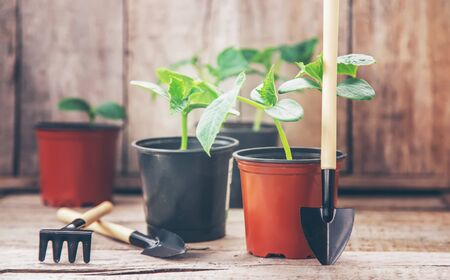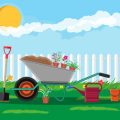Understanding Your Houseplants Water Needs
When it comes to watering houseplants, there’s no one-size-fits-all approach. Every plant is different, and understanding what your specific plant needs is the first step toward keeping it healthy and thriving. From desert-loving succulents to lush tropical foliage, each type has its own hydration preferences.
Different Plant Types, Different Needs
Let’s break down how different categories of houseplants prefer their water:
| Plant Type | Watering Frequency | Watering Tips |
|---|---|---|
| Succulents & Cacti | Every 2–4 weeks | Allow soil to dry out completely between waterings; avoid overwatering |
| Tropical Plants (e.g., Monstera, Philodendron) | Once a week or when top inch of soil is dry | Keep soil slightly moist but not soggy; increase humidity if possible |
| Ferns & Calatheas | 2–3 times per week | Prefer consistently moist soil; sensitive to dry air and tap water chemicals |
| Aroids (e.g., Pothos, Peace Lily) | Once every 5–7 days | Water when top 1–2 inches of soil are dry; don’t let sit in standing water |
The Role of Light, Humidity, and Pot Size
Light Exposure
The more light a plant gets, the faster it uses up water. A plant in bright indirect sunlight may need watering more often than one in low light.
Humidity Levels
Higher humidity helps plants retain moisture longer. If you live in a dry climate or use indoor heating, your plants may dry out faster and need more frequent watering.
Pot Size & Material
Larger pots hold more soil and therefore retain moisture longer. Terracotta pots dry out quicker than plastic ones because they’re porous. Here’s a quick guide:
| Pot Type | Water Retention |
|---|---|
| Terracotta/Clay | Loses moisture quickly; good for plants that like to dry out between waterings |
| Ceramic with Glaze | Keeps moisture longer; good for tropical plants needing consistent moisture |
| Plastic/Nursery Pots | Retains moisture well; be cautious of overwatering |
A Quick Tip:
Your finger is your best tool! Stick it an inch into the soil—if it feels dry, its time to water. If its still damp, wait a few more days.
Tuning into your plant’s individual needs will help you avoid common watering mistakes like overwatering or underwatering. Next up, we’ll explore how to actually water your houseplants the right way so they can thrive year-round.
2. Choosing the Right Watering Method
When it comes to keeping your houseplants healthy and thriving, how you water them is just as important as how often. Different watering techniques can make a big difference in plant health, especially depending on your plant type, pot size, and lifestyle. Lets take a closer look at the top three watering methods—top watering, bottom watering, and self-watering pots—to help you decide which one fits best for your indoor garden.
Top Watering
This is the most common method and involves pouring water directly onto the soil from above. It’s simple and works well for most plants, especially those that like their soil to dry out a bit between waterings. However, it can sometimes lead to overwatering or uneven moisture if not done carefully.
Pros:
- Easy and quick
- Helps flush out excess salts from fertilizer
- Good for plants in breathable pots like terracotta
Cons:
- Risk of overwatering or underwatering
- Water may run off before soaking in
- Can cause soil compaction over time
Bottom Watering
This method involves placing your plant pot in a tray or bowl of water and letting the soil soak up moisture through drainage holes. It promotes deeper root growth and helps prevent fungus gnats by keeping the surface of the soil dry.
Pros:
- Evenly moistens the soil
- Reduces risk of mold or pests on the surface
- Encourages strong root development
Cons:
- Takes more time than top watering
- Not ideal for very large or heavy pots
- You need to monitor so roots don’t sit in water too long
Self-Watering Pots
If youre busy or tend to forget about watering, self-watering pots can be a game-changer. These containers have a built-in reservoir that lets your plant draw up water as needed through capillary action.
Pros:
- Convenient for busy schedules or travel
- Prevents overwatering and underwatering
- Keeps consistent moisture level for thirsty plants like ferns or peace lilies
Cons:
- May not work well for succulents or cacti that prefer drier soil
- Pots can be more expensive than standard ones
- You’ll still need to occasionally flush the soil to avoid salt buildup
Comparison Table: Which Method Is Best For You?
| Watering Method | Best For | Main Advantage | Main Drawback |
|---|---|---|---|
| Top Watering | Most houseplants, beginners | Quick and easy; flushes salts | Uneven moisture risk; possible overwatering |
| Bottom Watering | Picky plants, fungus gnat prevention | Even moisture; encourages deep roots | Takes more time; may not suit large pots |
| Self-Watering Pots | Busy lifestyles, moisture-loving plants | Lowers maintenance; prevents inconsistent watering | Ineffective for drought-tolerant species; higher cost |
No matter which method you choose, always consider your plant’s specific needs and your daily routine. The right watering technique can go a long way in promoting lush growth and happy greenery in your home.
![]()
3. How Often Should You Water?
Watering your houseplants isn’t a one-size-fits-all routine. The frequency depends on several factors, including the type of plant, the season, and your indoor environment. Understanding these variables helps you create a watering schedule that closely mimics your plants natural habitat, keeping them healthy and thriving.
Timing by Season
Plants have different needs throughout the year. During spring and summer, many houseplants enter their active growing phase and typically require more water. In fall and winter, growth slows down or stops altogether, so less water is needed.
| Season | Watering Frequency | Tips |
|---|---|---|
| Spring | Every 5–7 days (depending on plant) | Check soil moisture regularly as plants start waking up from dormancy. |
| Summer | Every 3–5 days | Higher temperatures mean faster soil drying—monitor plants more frequently. |
| Fall | Every 7–10 days | Begin reducing watering as growth slows. |
| Winter | Every 10–14 days or less | Avoid overwatering; most plants are in dormancy or minimal growth mode. |
Timing by Plant Type
Certain plants have unique watering needs based on where they originate from. Heres a quick guide:
| Plant Type | Watering Needs | Examples |
|---|---|---|
| Tropical Plants | Keep soil consistently moist, not soggy | Pothos, Monstera, Peace Lily |
| Cacti & Succulents | Allow soil to dry out completely between waterings | Aloe Vera, Snake Plant, Echeveria |
| Drought-Tolerant Foliage Plants | Water when top inch of soil is dry | Zanzibar Gem (ZZ Plant), Rubber Tree |
| Humidity-Loving Plants | Mist regularly and keep soil lightly moist | Ferns, Calatheas, Prayer Plants |
The Role of Indoor Climate
Your home’s climate affects how quickly the soil dries out. Factors like temperature, humidity, air circulation, and even sunlight exposure all play a role. For example:
- Dry indoor air (especially in winter): Soil dries faster—monitor more frequently.
- High humidity areas (like bathrooms): Soil stays moist longer—water less often.
- Potted plants near heaters or vents: May need more frequent watering due to faster evaporation.
Create a Consistent Watering Routine
Step-by-Step Tips:
- Check soil moisture before watering: Use your finger or a moisture meter to test the top inch of soil.
- Create a calendar or set reminders: Track each plant’s watering schedule individually.
- Mimic natural conditions: Try to replicate each plant’s native environment in terms of light and humidity.
- Avoid sticking to rigid schedules: Instead of watering every “X” number of days no matter what, let the plant tell you when its thirsty.
- Lump similar plants together: Group plants with similar needs to make care easier and more consistent.
A little observation goes a long way. Over time, youll get to know your plants rhythms—and theyll thank you with healthy leaves and strong growth!
4. Signs of Overwatering and Underwatering
Knowing how much and how often to water your houseplants can be tricky, especially since different plants have different needs. But your plants will usually let you know when somethings wrong. Here’s how to spot the signs of both overwatering and underwatering—plus what you can do to fix them.
Common Signs of Overwatering
- Yellowing Leaves: If leaves turn yellow and feel soft or mushy, it’s a classic sign of too much water.
- Root Rot: Overwatering can cause roots to stay wet too long, leading to rot and a foul smell from the soil.
- Moldy Soil Surface: A white or fuzzy layer on top of the soil could be mold caused by excess moisture.
- Drooping Despite Wet Soil: If your plant looks wilted even though the soil is wet, it may be suffering from root damage due to overwatering.
Common Signs of Underwatering
- Crispy or Brown Leaf Edges: Dry, brittle edges on leaves usually mean your plant is thirsty.
- Wilting with Dry Soil: When the whole plant droops and the soil feels dry to the touch, its time to water.
- Slow Growth: Plants that aren’t getting enough water may grow slowly or stop growing altogether.
- Shriveled Leaves: Especially common in succulents, leaves may wrinkle or curl inward if they lack water.
Troubleshooting Guide
If youre unsure whether youre overwatering or underwatering, use this quick comparison chart:
| Overwatering | Underwatering | |
|---|---|---|
| Leaf Color | Yellow and soft | Crispy brown edges |
| Soil Feel | Soggy or constantly wet | Brittle and dry |
| Pest Risk | Mold, fungus gnats | Aphids, spider mites (in stressed plants) |
| Treatment | Aerate soil, reduce watering, check for root rot | Add water thoroughly until excess drains out |
How to Fix Common Watering Mistakes
If You Overwatered:
- Let the soil dry out before watering again.
- If theres root rot, gently remove the plant from its pot, trim off any black or mushy roots, and replant in fresh, well-draining soil.
- Avoid letting your plant sit in standing water—always empty saucers after watering.
If You Underwatered:
- Saturate the soil fully—water until it drains from the bottom of the pot.
- If the soil has pulled away from the pot’s edges, soak the entire pot in a tray of water for about 30 minutes.
- Create a consistent watering schedule based on your plant’s needs and environment.
Your houseplants rely on you to keep their moisture levels just right. By learning these warning signs and solutions, youll be better equipped to give them the care they need.
5. Water Quality Matters
When it comes to watering your houseplants, the quality of water you use can make a big difference in their overall health. Not all water is created equal, and understanding the differences between tap water, filtered water, and distilled water can help you make the best choice for your green friends.
Tap Water: Convenient but Sometimes Problematic
Tap water is the most commonly used water source for houseplants. While its convenient, it often contains chlorine, fluoride, and various minerals that may not be ideal for every plant. Over time, these additives can build up in the soil and affect plant health—especially for more sensitive species like Calatheas or Spider Plants.
Common Issues with Tap Water:
- Chlorine: Can harm beneficial microbes in the soil.
- Fluoride: May cause brown leaf tips in fluoride-sensitive plants.
- Hard Water Minerals (Calcium & Magnesium): Can lead to white crusts on soil or pots and interfere with nutrient uptake.
Filtered Water: A Better Everyday Option
Using filtered water can help remove chlorine and some of the minerals found in tap water. It’s a great middle-ground option for most houseplants and helps reduce the risk of long-term soil buildup. You can use a simple pitcher filter or an under-sink system to improve your tap water.
Distilled Water: The Cleanest Choice
Distilled water is free from all minerals and chemicals, making it ideal for sensitive plants. However, because its stripped of nutrients, it shouldnt be your only water source long-term unless youre supplementing with proper fertilization.
Comparison Table:
| Water Type | Pros | Cons | Best For |
|---|---|---|---|
| Tap Water | Easily accessible; no extra cost | May contain harmful chemicals and hard minerals | Tolerant plants like pothos or snake plants |
| Filtered Water | Reduces chlorine and some impurities | Slight ongoing cost; doesn’t remove all minerals | Most common houseplants |
| Distilled Water | Chemical- and mineral-free | Lacks nutrients; more expensive over time | Sensitive plants like calatheas or carnivorous plants |
Avoiding Salt and Mineral Buildup in Soil
No matter what type of water you use, salt and mineral buildup can still occur over time—especially if you fertilize regularly. Here are a few easy ways to prevent it:
- Flush the soil: Every couple of months, thoroughly drench the potting mix until excess water drains out the bottom. This helps wash away accumulated salts.
- Avoid over-fertilizing: Stick to recommended feeding schedules and dilute fertilizer when necessary.
- Repot occasionally: Refreshing the soil every year or two keeps mineral levels balanced and roots healthy.
Your choice of water affects more than just hydration—it impacts nutrient absorption, soil condition, and overall plant vitality. By understanding how different types of water interact with your houseplants, youll be better equipped to keep them thriving year-round.
6. Tools and Tips for Effortless Watering
Keeping your houseplants happy doesnt have to be complicated. With the right tools and a few smart tips, you can make watering easier, more accurate, and less time-consuming. Here are some handy tools and hacks that every plant parent in the U.S. should know about.
Must-Have Watering Tools
These tools can help you water more efficiently and avoid common mistakes like overwatering or underwatering.
| Tool | Description | Why It Helps |
|---|---|---|
| Moisture Meter | A simple device you stick into the soil to check moisture levels. | Takes the guesswork out of watering by telling you exactly when your plant needs water. |
| Watering Can with Narrow Spout | A specially designed can that lets you direct water right to the soil without splashing leaves. | Helps prevent overwatering and keeps foliage dry, reducing the risk of mold or mildew. |
| Plant Saucers | Dishes placed under pots to catch excess water. | Protects your floors and furniture while allowing for proper drainage. |
Smart Watering Hacks
Use Ice Cubes for Small Pots
If youre caring for small plants like succulents or orchids, try placing an ice cube or two on the soil surface. They melt slowly, giving the roots time to absorb water gradually without overwhelming them.
Create a Watering Schedule
Set a reminder on your phone or use a calendar to track when each plant was last watered. This helps avoid accidental neglect or overwatering—especially helpful if you have a lot of plants!
Group Plants with Similar Needs
Place plants with similar watering requirements together. This makes it easier to care for them all at once instead of treating each one individually.
Use Room-Temperature Water
Cold water can shock plant roots. Always let tap water sit out for a few hours before using it, so its room temperature and any chlorine can dissipate.
Pro Tip:
If youre going away for a few days, use self-watering spikes or place your potted plants in a shallow tray filled with water and pebbles. This provides a temporary source of moisture while youre gone.
With these tools and tricks, youll be well-equipped to keep your indoor jungle thriving with less effort and more confidence.


